Are you looking to get more traffic to your blog? Want to increase your existing blog traffic? Well, you have landed on the right resource.
In this tutorial, you are going to find 34 Actionable Strategies that we have implemented on our blog to increase blog traffic. If it works for us, then it will definitely work for you.
Without any delay let’s work for the blog traffic boost.
How to Increase Blog Traffic for Free – Proven Strategies
Good web traffic is necessary to sustain a blogging business. Talking about a hike in blog traffic, plenty of techniques we can implement for this purpose. However, you should always implement one strategy at a time and analyze how it will work for your blog.
Following are the quick & actionable strategies to drive more traffic to a blog:
1. Write About Trending Topics
Creating content on hot and trending topics has always been one of the finest strategies to attract dozens of visitors in no time. The other benefit associated with this strategy is the lack of competition. The trending topics are usually uncovered and because of this, the chances of quick ranking in SERP are usually high.
But how would you find trending topics around your niche?
Use Google Trends (free tool)
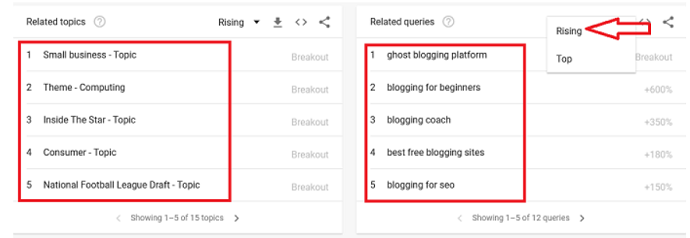
Use Buzzsumo (paid tool) – To find what’s trending in social media around your niche.

2. Pick up the Right Keywords
Targeting the right keywords will always be a healthy practice to achieve a good ranking in SERP and because of this, the increment in traffic can be seen in no time.
But what are the right keywords? The right keywords are those which have low competition and yet hold a good amount of traffic volume. In other words, you have to target long tail keywords, question-based keywords, and informational keywords.
The first question is: How do you get those long tail keywords?
Use answerthepublic.com (free tool) – The only problem here is – the volume data is missing.
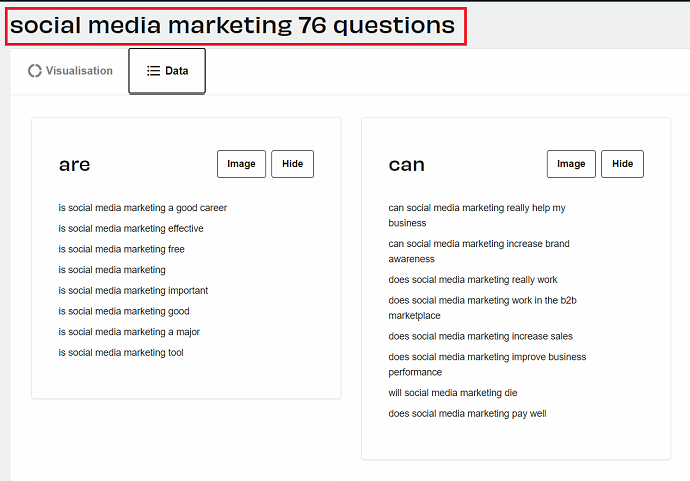
Use Semrush (Professional keyword research tool) – We are using it to plan keyword strategy for your blog. It shows volume data, keyword difficulty, backlinks count, and whatnot. All those metrics help you in planning a perfect undefeated keyword strategy for your blog.
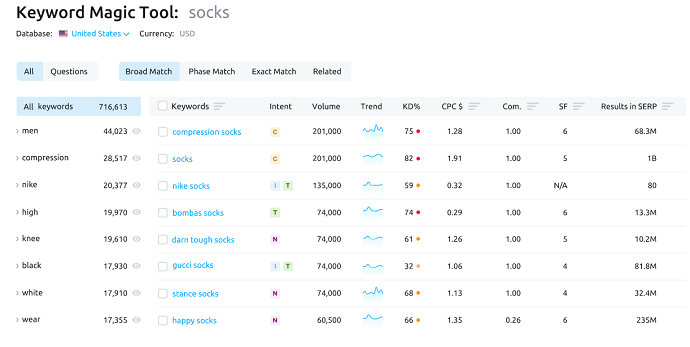
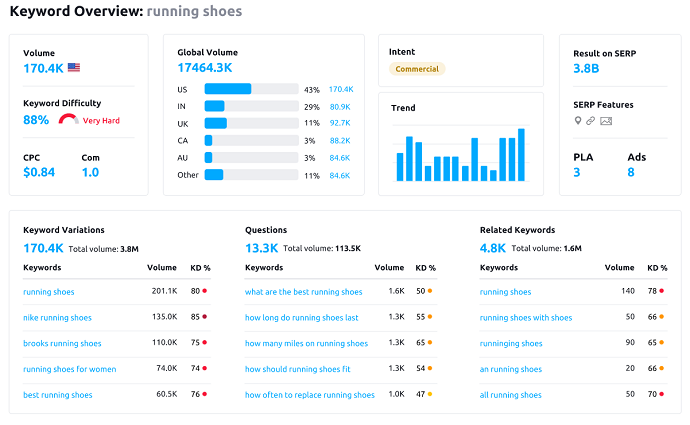
3. Create Content on the Most Search Queries
You would never like to Create the content on the queries that nobody searches for, right? Yes, there are chances that you know some great topics under your niche. But still, you have to create content on things people actually want to know.
So how would you be able to find those killer content ideas?
Well, you can use Semrush to find topics (keywords) with exact search volume. However, there is another way I usually recommend to those who don’t have any professional SEO tools.
The method is called the Alphabet Soup method. The main benefit of this method is that you are always getting the content ideas that are hot & trending right now.

Hint: The step-by-step procedure to extract most search queries from this method is mentioned in our previous post: How to find content ideas.
4. Posting Content Regularly is the Key
Google and all search engines (Bing, Yahoo, etc) are always looking for updated content and their algorithm automatically improves the ranking of those websites that maintain consistency in publishing content.
But posting content regularly doesn’t mean publishing anything. To get remembered in visitors’ minds, you have to publish really good quality content.
Some of the important tips you should keep in your mind while posting content on your blog:
- Do original research and deliver killer content rather than rewriting the existing content out there on the web.
- Publish content your audience is actually interested in. Or simply go for what is already working for your blog. Simply open up Google Analytics to see which posts get more engagement and hits. Posting similar content is always a good practice to keep blog readers engaged.
- Creating a content editorial calendar always helps you in maintaining consistency in content publication.
- Tell stories in content for better engagement.
- Post content on a platform that works for you the most. For example, you might be interested in creating pins on Pinterest because your audience is more likely to hang out there. Driving audiences from those platforms to your blog is always the evergreen strategy to get more traffic to your blog.
Related: How to Quickly Install Google Analytics in a WordPress Blog
5. Ensure your content matches the search intent
If your content doesn’t match the reader’s intent, then there is no way your blog post is ever going to rank on Google and other search engines. Creating the right intended content for the targeting keyword is a crucial thing to succeed in SEO.
Your blog post content structure should be aligned with the user intention they have from a particular search query.
So how can you create content with the right search intent?
Understand with this example:
Suppose I wanted to write a blog on “Best Washing Machine” and my primary targeting keyword is the same. So when I googled that keyword, all results in the SERP are list-based. So if I create content that focuses only on a single washing machine it will never rank on Google. I have to create list-based content and target multiple washing machines for this search query.

So before drafting a content structure for the blog post, it is best to figure out the search intent for the keyword.
6. Republish the Old Content
Content freshness is still one of the popular and relevant factors of Google and other search engines. Nobody likes outdated information. If your blog niche is related to something where information keeps updating frequently, then updating and republishing the old content is highly essential.
Prepare a Google sheet or something and track a record of the publication date of your blog posts. Then as per your niche, plan a republishing schedule where you have to check for new information. If you find new information, then update your content and republish it.
Republishing doesn’t mean you have to republish your content daily. For most of the niches, updating content once a month is enough. Even Google considers this a fair practice.
7. Utilize the Push Notification Tool
Push Notification tool is another tiny hack bloggers used to implement on their site to bring back the readers to their site. The notification tool simply notifies the opted-in users through their browser whenever there is a new post published on the website.
This tool not just enhances the traffic, but the conversation and sales too.
The notification on the browser looks like this:
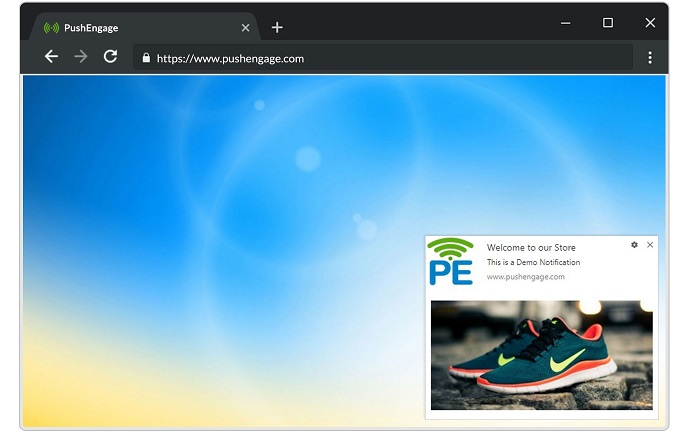
So the question is how can you set up the notification system on your site? Well, I must say this is gonna be much easier for WordPress bloggers. You just have to install a push notification plugin and you are done.
Hint: Well, we already have written a separate guide on the best WordPress push notification tool. You can choose a push notification plugin from that Guide. We personally recommend PushEngage (mentioned in our article).
8. Say yes to Guest Posting
Guest Posting can be done two ways: You write as a guest and you allow guests to write on your blog as a guest. This can help you in the longer run. You will not only earn backlinks, but also a network of bloggers in your space.
There are plenty of ways to find Guest Post Opportunities but the simplest technique is mentioned below (you can even start right now)
To find guest post opportunities in your space, just open up the google search and type these queries:
- intext:keyword AND “submit guest post” (Example: intext:Blogging AND “Submit guest post”)
- intext:keyword AND “write for us” (Example: intext:SEO AND “write for us”
- Intext:keyword AND “guest post guidelines” (Example: intext:WordPress AND “guest post guidelines”)
Replace “Blogging, SEO & WordPress” in the above queries with your niche keyword.

These are the queries generated through Google Operators. You can play around and build your own queries and experiment with them.
9. Take an advantage of Quora & Reddit
I think there is no need to explain how you can use Quora & Reddit platforms to drive traffic to your blog. You just have to find the questions on these platforms related to your niche, answering them in a way that looks like you are actually helping users.
Note: Just be careful, you don’t have to be salesy on these platforms. Otherwise, you might get blocked.
10. Setup Email Marketing System and Gain Traffic
Everyone, (newbies & experts) should leverage email marketing. Driving the targeted audience to your blog is always gonna result in high conversion and sales. These are the people who opt for your blog and these are the only people who might have an interest in the products/servicing you are offering.
Configuring the email marketing system for building email lists is extremely easy. You just have to hook up an email marketing (lead marketing) plugin and you are ready to collect leads.
Here is a simple resource you can use to understand more: Set up a simple email marketing system with MailChimp and WPForms.
Email Marketing is really a vast topic to learn. But here are a few tips that helps you to begin the email marketing chapter:
Offer some kind of freebie (lead magnet)
Lead Magnet attracts readers to subscribe to your mailing list. Spend some really good time building a quality lead magnet. If readers don’t get the value from your lead magnet, then they won’t be interested in the products/services you are going to pitch them via email later.
Consider a landing page approach
Capturing leads from WordPress Forms plugged into the website is a good thing. But you should prepare a separate landing page where you can explain the values (via lead magnet) you are going to provide. Then you can drive either organic traffic or paid traffic to your landing page and increase the mailing list.
Building a landing page on WordPress is not a big deal. But the copy of the landing page matters the most.
Here are the few resources you can use to configure a great landing page on your WordPress site:
11. Repurpose the Content on YouTube
Does your niche audience love to hang around on YouTube? If yes, then you should start a YouTube Channel today and start repurposing your blog topics to YouTube.
Finding whether your audience is available on YouTube is not difficult at all.
Just Navigate to Google Trends, search a few of the popular terms related to your niche and rest leave on the Google trends graph. Make sure to select “YouTube Search”.
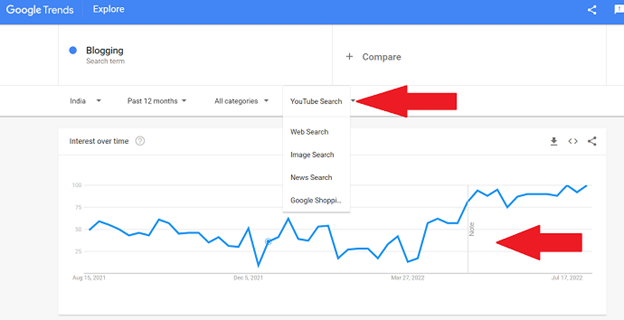
12. Do Content Repurposing on Social Media Platforms
Similar to YouTube, you should not forget the popular social media platforms where your audience lives. It might be Pinterest or maybe Facebook. Whatever it is, make sure to serve good quality content and drive traffic back to your blog.
To find the social media platform where your audience likes to hang out, simply navigate to the platform search for a few keywords, and see how many results you get AND how much engagement are they getting.
Another easy approach to do this is to use a tool like Buzzsumo.
Planning a Social Media editorial calendar might be helping you in the long run. You don’t have to plan separate content for Social Media. Just take your best-performing blog posts and convert their topics into multiple social media posts.
Two tools I would like to share with you which help you a lot in managing social media content:
1. Canva (for social media post creation)
If you don’t have a social media guy or maybe a graphic designer on your team, then Canva is going to be a savior for you. It has all the social media templates, and elements you ever need. Its free version is enough most of the time, but you can explore its premium version at any time.
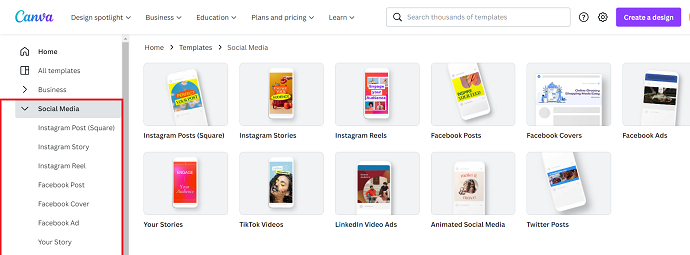
2. Social Media Management Tools:
At first, you might not feel the need for these tools, but as your social channel grows you will need such tools to monitor and schedule the social content.
Hint: You can learn more about these tools from here: 8 Best Social Media Management Tools
Pro Tip: Some of the social media management tools have the feature of sharing WordPress posts automatically to Social media platforms. For Example Social Champ.
Pro Tip: You can even use these social media management tools to set up alerts for monitoring specific keywords. If these keywords appear for example in comments, or someone asks a question including your keyword, you would receive a notification. Once you get notified, just involve in the conversations with people and try to mention your blog’s relevant article, and drive traffic back to your blog.
13. Post Content on Niche-Specific Forums
Quora and Reddit are 2 of the best forum-based websites. However, you should not underestimate the forums that are dedicated to your audience.
Participating in the niche-oriented community always helps you more and you can use it wisely to drive traffic back to your blog.
The question is how would you be able to find the niche-specific forums?
Again Google Operators can help you here: Just use the below queries in a google search and you will be presented with multiple forums and websites.
The queries to find Niche-Specific Opportunities:
- intitle:keyword AND “forum”
- Intitle:keyword AND “Join the community”
You can create your own queries and experiment with Google Operators.
14. Create CTR Rich Headings & Titles
You never wanted the situation where your blog is getting ranked in the first position of the search results and yet your CTR rates scored less. Getting clicks majorly depends on how engaging the title of the headline is.
Here are the tips you can use to create engaging headings and titles:
- Use Colon. Example: Google Analytics: The only 5 awesome ways to learn.
- Ask a question: Is your headline clear?
- Use question marks
- 6 Words headlines always work better
- Use headline generators if you are facing problems in generating good headlines
- The headline should state some benefit
- Include Power words
- Include an emotion of fear of missing out (FOMO)
- The headline should be insanely specific: Meaning users would understand exactly what they are getting from the title.
- Mention the current year
- Avoid words having multiple meanings
- Related: 9 Best Free Headline Analyzer Tools
15. Creation Attention Grabbing Viral Posts
The posts in which you’re targeting users’ problems and pain are called Attention Grabbing Posts. These are the special posts that demand special attention during drafting.
These are usually short posts that have a huge chance of getting viral. But sometimes long posts work well too.
You can use these attention-grabbing post templates to structure your content:
- X ____ you didn’t know about ____
- why you should stop ____
- why your _____ sucks and what to do about it.
- X ____ sins and what to do to rectify them
- X reason your ______ will fail
- X things that expert don’t tell you about _________
- X myths about ______that you need to steer clear from
- What the best _____ know about _____ that you don’t
16. Consider Paid Promotion
The SEO is great. However, it’s not easy to achieve rankings especially if your niche is competitive. That’s where the paid promotion comes into action.
Well, driving paid traffic from any social media platform could boost sales and conversions. Because platforms like Pinterest, and Facebook allow you to create targeted audiences who are highly interested in your products/services.
There is one more benefit you get from Paid Promotion – Well, Google considers the signal of getting traffic from social platforms good. So It will definitely impact the SEO ranking of your blog.
Plus, Over social platforms, when people see your advertisement they will reshare it. And this would earn you a bunch of no-follow social backlinks which is again beneficial for SEO.
Well, if you are a newbie in paid advertising don’t start doing things by yourself. You might consider hiring a PPC ads specialist or maybe a social media expert. However, if you have time to invest in learning, you can learn everything from the internet for free. Dozens of free resources are available.
17. Maintain the On-Page SEO Health
Do you want to increase search traffic on your Blog? Then On-Page SEO is a must to do.
Doing proper On-Page SEO is a one-time thing and the benefit of this will be there for a longer time.
Here are the On-Page SEO guidelines pointers we have been using on all of our blogs:
- Include keyword variations of the primary keyword
- Include Pros & Cons structured data – Recently released by Google
- Optimize your blog post content so that it can appear in Google featured snippet
- Include the main keyword in the first 150 words of content
- The image alt tags should be descriptive
- Include FAQ structured data
- Put LSI keywords related to the keyword
- Place a primary keyword in URL, Meta Title, and Meta Description
- The keywords in the page URL should be separated by a dash (-)
- Only use one H1 Tag per web page
- Try to answer questions in a feature snippet format
- Include your main targeted keyword in H2, and H3 tags at least once
- The primary keyword frequency should be 1-2% of the total words count
- Add lots of visuals in GIFs, Videos, etc
- Make sure to include relevant internal links in all blog posts
- Don’t forget relevant outbound links
- Try to maintain a balance between the number of internal links and outbound links
- To appear in a “list-based feature snippet” make sure to add more than 9 items in a blog
- Use Table of Content plugins to create an outline for the content
- Make sure to follow the right search intent in your article
- Affiliate links should be nofollow + sponsored
- Don’t put so many affiliate links in a single blog. 2-3 links of the single product in relevant places always work the best.
Hint: To manage affiliate links properly on a blog, it is highly recommended to use WordPress affiliate plugins
Hint: Take the help of the Internal Links plugin to manage the flow of internal links on your website easily.
Hint: You can use the RankMath WordPress plugin to add structured data to your website pages without any coding.
Hint: Besides On-Page SEO, you should always be updated about the changes happening in the Google Ranking algorithm. There is always something going on Google Search Central Blog. Depending on the changes, you have to tweak On-Page SEO guidelines regularly.
Note: You can bookmark this article because we will be updating On-Page SEO guidelines as per the changes in Google Ranking Algorithm.
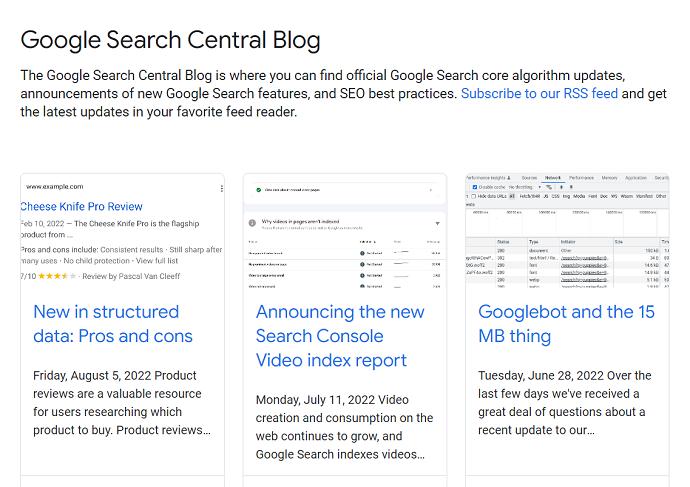
18. Try to Create More Backlinks
Relevant backlinks are equivalent to top positions in SERP.
High-quality backlinks are one of the major factors of the Google Ranking algorithm. Investing quality time in building backlinks will always help you in the long run. But there is no denying the fact that building high-quality backlinks is tough.
If you want to sail your backlink ship by yourself, you can follow the Backlinko blog where dozens of high-quality resources related to building backlinks are available.
Also, you can hire a Freelance backlinks expert from top freelance websites.
19. Cite Other Blogs
Citing other blogs is not only good from a traffic point of view but this technique also helps you to build long-lasting healthy relationships with other bloggers in your space. Citing is just the beginning of the relationship and you can even outreach bloggers for backlinks in the future.
You can cite other blogs in various ways. For example, you can interview one of the top bloggers and narrate all the details in a separate blog post. You can even feature other blogs in your list-based posts. For example “Best 10 Blogs on Social Media Marketing”
Note: Citing alone doesn’t increase your blog traffic. You have to outreach bloggers and tell them that you cited their blogs in your blog. It is possible they will share your blog on different channels and as a result, your blog might be able to gain some traffic.
20. Use lots of images
Adding Images with proper descriptive alt tags has increased the chances of your blog images appearing under Google image search.
Plus images are one of the elements which improve the readability and user page session time on your blog. Engagement and high page session time play a vital role in search engine ranking. An enhancement in ranking means an enhancement in blog traffic.
21. Place Social Sharing Buttons
Placing Social sharing buttons on a blog allows readers to share your blog post on popular social platforms. This is a tiny one-time hack to increase the reach of your blog. Not just reach, you will also earn a bunch of social backlinks.
Well, placing social sharing buttons on a WordPress blog can be easily done with WordPress Social sharing plugins. However, it is not enough. You have to encourage users to use social buttons and share your blog.

Encouraging can be done by dropping special text within the main content. For example, you can add this line: “Are we helping you? Share on Twitter and help others”.
Hint: Check this guide to learn how to add social media follow buttons to the WordPress website.
22. Keep the Score of Core Web Vital Metrics High
Have you seen the core web vitals section in the Google Search Console dashboard?

Well, Core web vitals is the set of 3 metrics that google uses to determine the user experience of a web page. Since 2021 June, Google has been considering Core web vitals score as a part of page experience ranking factors.
From the Google search console, you can analyze the score of core web vitals for both mobile and desktop devices. If your webpage core web vitals scored less, then forget the first position in SERP.
In other words, Core web vitals would directly impact the website ranking and hence your blog traffic.
So how do you improve the core web vital metrics score?
The solution is mentioned in our improve core web vitals in-detailed guide.
23. Create Evergreen Posts
As per Moz study, Evergreen Posts are the toughest to create but can be beneficial in the longer run. The posts which are designed with the goal to bring traffic to a blog for a long period of time are generally referred to as evergreen posts.
So, how do you make regular blog posts evergreen?
- Do original research. Copy nothing from competitors.
- Add data, statistics & infographics
- Do your own product testing
- Conduct a poll with a group of people to collect data
- Research top 10 google search exiting results and analyze what can be improved
- Add tables
- Read people’s comments on other blogs and understand what they are actually looking for
- Address the audience’s pain points and solve their problems.
- Pick up the phone and conduct calls to collect data (if required)
- Make a video as well
- Add PDFs
- Share expert words within your blog post to make your blog post interesting.
- Research the questions people are frequently asking related to your topic
- Make sure to cover every possible angle in your topic
24. Attracts more readers through Amazon Kindle
If your blog niche is something where people love to prefer reading books, then this strategy can bring your blog a lot of traffic.
You just have to create a free high-quality eBook around your topic and publish it for free on Amazon Kindle.
The main thing you have to do is encourage readers through eBooks to visit your blog.
25. Put your Blog Name on all Social Profiles
Add a link to your blog in the bio of all social platforms you are using. Plus regularly promoting your blog content across social channels will always bring traffic to your blog.
26. Ensure your Content is Readable
Good readability has a direct impact on the user page session time, and if your page readability sucks users will not be stuck together with your content for a longer duration. Google hates that, and it will downgrade your web page position in SERP which impacts badly on the blog traffic.
So how do you improve the readability of the web page? Well, follow these tips to achieve good readability:
- Keep the content structure (table of content) short
- Arrange headings in a systematic & sensible order
- Webpage should be highly visually interactive (images, charts, videos, GIFs, infographics, etc)
- Organize sections with subheads
- Use list, blockquotes wherever required
- Use separators to divide sections
- Focus on quality of content. Word count between 2500-3000 works well most of the time.
- Pictures quality must be sharp and visible
- Write in the second person (Use “You”) and maintain a conversational writing tone.
- Add a conclusion section
- Write short paragraphs (3-4 lines each)
- You should clarify through the introduction section what users can expect from your blog
- Use storytelling aspect.
27. Encourage Users to Drop Comments on Blog Posts
Did you know Google gives first preference in a ranking position to those blog blogs which have dozens of user comments? Well, there isn’t any written statement given by Google, but I have seen it a lot of times during search analysis.
The blogs which have less authority but have comments can have the potential to beat the high authority websites.
So, this is why you have to encourage visitors to start a discussion in the comment section of the blog. Because of the discussion, users are more likely to come back to your blog. And as a result, the dwell time of your web pages will be improved in no time.
28. Keep the Website Design Clean and Professional
The bad website design directly impacts the CLS score of a webpage (one of the 3rd core web vital metrics). Basically, CLS measures how stable the element of a web page is. Elements like Popups, unwanted changes in the layout, etc can affect your website design and hence your CLS score.

Avoiding such elements is one thing. However, a good website theme like GeneratePress will solve all your design issues and helps you to achieve a clean website design. If you are unhappy with your blog theme and design, I highly recommend checking out GeneratePress.
29. Monitor Potential Keywords and Optimize Them
Well, this strategy of enhancing blog traffic is one of my favorites. In this technique, basically, we are going to monitor the keywords of our blog pages that are performing low and then we optimize them. By doing this, your blog pages will rank for the additional keywords, and hence your blog will have increased.
Hint: This strategy takes time to show results. However, it is very powerful.
First, navigate to the Google search console and then follow these steps:
- Navigate to performance > search results > query tab
- Now just above the queries tab, tap on the “New” button
- Then select “Page”
- Put the URL of the webpage on which you want to increase the organic traffic.
- Now you will be seeing all the queries that your selected page is ranking for.
- Finally, you have to note down all those queries which are positioned between 5-10 but have enough impressions. Basically, these are the “keywords” that have traffic potential.
- To optimize these keywords, you can put them inside your page content or you can use them as anchor text and interlink from other relevant posts on your blog.

30. Keep Following the Google Algorithm Changes
There is always something going on Google Search Central blog about the Google Ranking algorithm.
The best way to keep updated about changes in the ranking algorithm is to bookmark the Google search central blog webpage or create a pin for it on the browser. Visit once or twice a week to check updates.
Hint: As per the new changes in Google Ranking Algorithms, you might have to make changes in your SEO strategy as well as in the content.
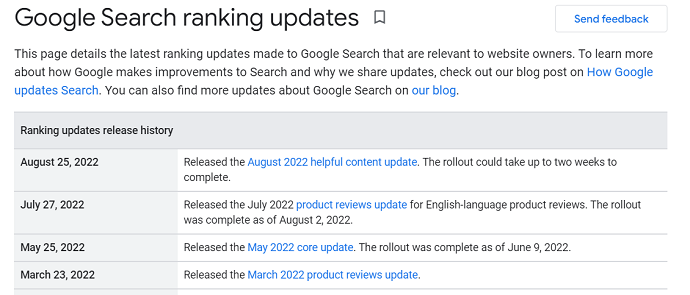
31. Optimize your website for Mobile devices
Mobile is the present & Mobile is the future. As per the Statista study, about 52% of worldwide traffic comes from smartphones. And this is why optimizing the website for mobile devices (mobile page experience) becomes requisite.
How to Measure Mobile Page Experience
In a Google search console, there is a separate tab “Page Experience” which shows the overview of the page experience of mobile users. In other words, this tab shows how healthy your website is for mobile devices.
See the below image:

In the above image, you can see that the mobile page experience report has been divided into 3 signals. Out of 3, there is only a problem in Core web vitals metrics. We have already covered core web vitals in the earlier section of this article. (The solution to improve core web vitals has also been mentioned)
Note: The bad mobile experience impacts your blog’s ranking position on Google. In other words, the mobile traffic will be reduced to your blog.
How to Optimize a Website for a Good Mobile Page Experience
A simple yet professional web design and high page speed loading will be enough for delivering a great page experience.
Great web design can be possible with professional WordPress themes like GeneratePress.
And a high page speed is only possible with powerful web hosting. Example Rocket.net or Kinsta.
32. Offer a Giveaway
Giveaways are the perfect ways to keep alive in the heart of readers. Everyone loves free giveaways. Giveaways based contests attract lots of readers to the blog.
To set up Giveaways on WordPress blogs, you can take help from the Giveaways plugin. The best example is Rafflepress.
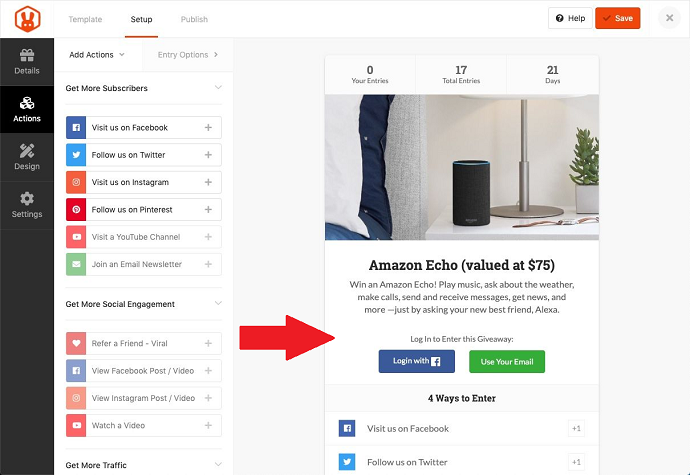
33. Develop a Community/Forum on your Website
In step 13, we have mentioned that you should be active on your niche-specific forums. But what if you don’t find any? Or there might be chances that your audience isn’t even active either on Quora & Reddit.
So what are you gonna do?
Well, if nothing is here you can start a community in your niche by yourself through your WordPress Blog. Membership-based WP plugins are gonna be very useful here to accomplish this task.
34. Collaboration with Experts through the Interview
This is kind of like stealing traffic from an expert’s blog within your niche. But for a good purpose.
- Basically what you have to do is to make a list of experts within your niche.
- Then you can email them which says you wanted to take an interview.
- Experts will share valuable information through your interview that your audience would be highly interested in.
- Post the interview on all channels.
- Chances are high, that the experts will share the same interview on their blog too
And this is how your blog gets recognition or in other words the new readers from your industries-experts blog.
Conclusion: Get More Traffic to Your Blog
So today we have seen 34 strategies to increase blog traffic. Have you implemented any of them? Or are you facing any kind of trouble? We have tried to keep each strategy simple and actionable.
However, do let us know in the comment section if you need any extra help.
Before ending this guide, we must say the results of implementing any of the strategies will take time to show. And it is also to be noted that you don’t have to implement all strategies at once.
Start with the strategy which is easier for you.
- Next Read: 22 Strategies to Find Content Ideas for your Blog
- Complete Guide to Make A Blog in 5 Minutes
I hope this article, How to Get More Traffic to Your Blog, helps you to generate blog traffic quickly. If you like this article, please share it with your friends. If you want more blogging tips, follow BlogVwant on Facebook, Twitter, and YouTube.
FAQs: Increase Blog Traffic
How to find my blog on google search?

To ensure whether google is indexing your blog pages or not, simply head over to Google and type site:domain.com and hit enter. (Replace domain.com with your website domain name). This search query will list out all pages of your blog which has been successfully indexed by Google crawler.
Why is my blog traffic not increasing?
Figuring out what causes a halt in website traffic can be time-consuming. The reason could be any. For example, The topics you chose are so small and don’t have a wide audience OR Your website might get a google penalty due to the violation of the SERP algorithm OR the competition is huge & your site might not be able to achieve top rankings OR the content quality might be poor OR Your website core web vitals scored less, etc.
Spend some analysis time on GSC & GA to learn what causes the pause in website traffic.
How do I get 1000 visitors on my blog?
The blog traffic enhancement techniques listed in the blog, if implemented correctly, the blog traffic will surely reach 1000 visitors per day. However, if your blog niche is so tiny then no wonder what you do, your blog will always be surrounded by less blog traffic.
How long does it take for a blog to get traffic?
The new blog probably takes 2-3 weeks to get highlighted in the eyes of Google. However, sometimes it takes a month. Keep at least 10 high-quality blogs and publish them one by one. Also, a proper sitemap and the internal linking structure help Google bot to crawl your website quickly.
How to check blog traffic?
To check blog traffic, first, you have to link your website with Google Search Console & Google Analytics free tool. Then you can measure daily, weekly, or custom date-based website traffic across all channels with the help of Google Search Console & Google Analytics tool.
Where to get blog traffic?
The majority of blog traffic can be acquired through search engines (Google, Bing, etc) and Social media channels.
Can I receive blog traffic from Pinterest?
Yes.
What are the best blog traffic sources?
Google, Bing, Quora, Reddit, Facebook, Twitter, and Pinterest, are the best free blog traffic sources.
Is buying blog traffic good?
Generally buying traffic from platforms like Fiverr, etc won’t work well. To drive a targeted audience on your blog, you can consider running paid ad campaigns through a reputative platform like Facebook, Google, Pinterest, etc.
What is good traffic for a blog?
For affiliate marketing-based blogs, even 5000 unique visitors per month are enough to produce enough sales. However, if your blog relies on Ads then 100,000 or more visitors are required to make a good amount of money.
